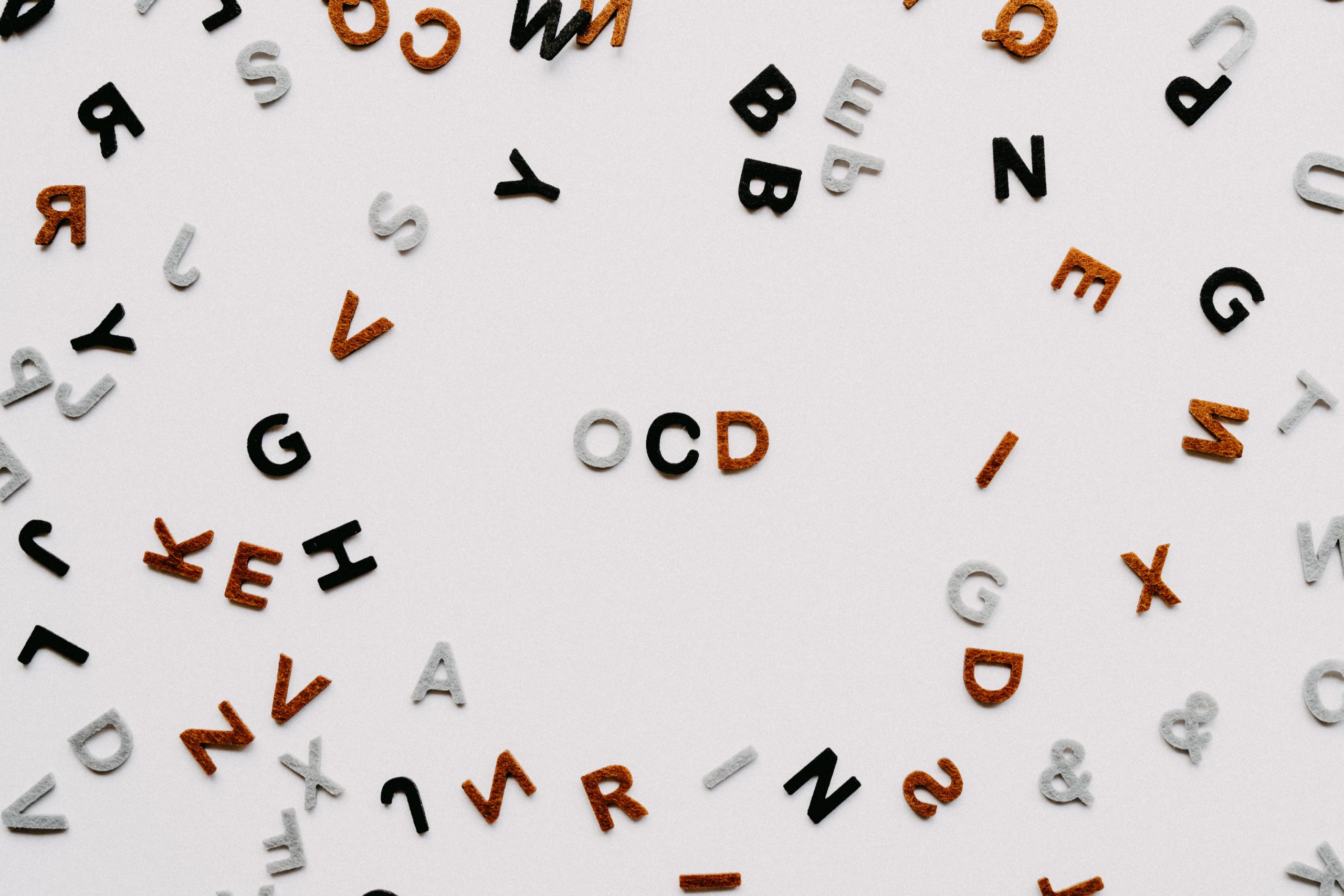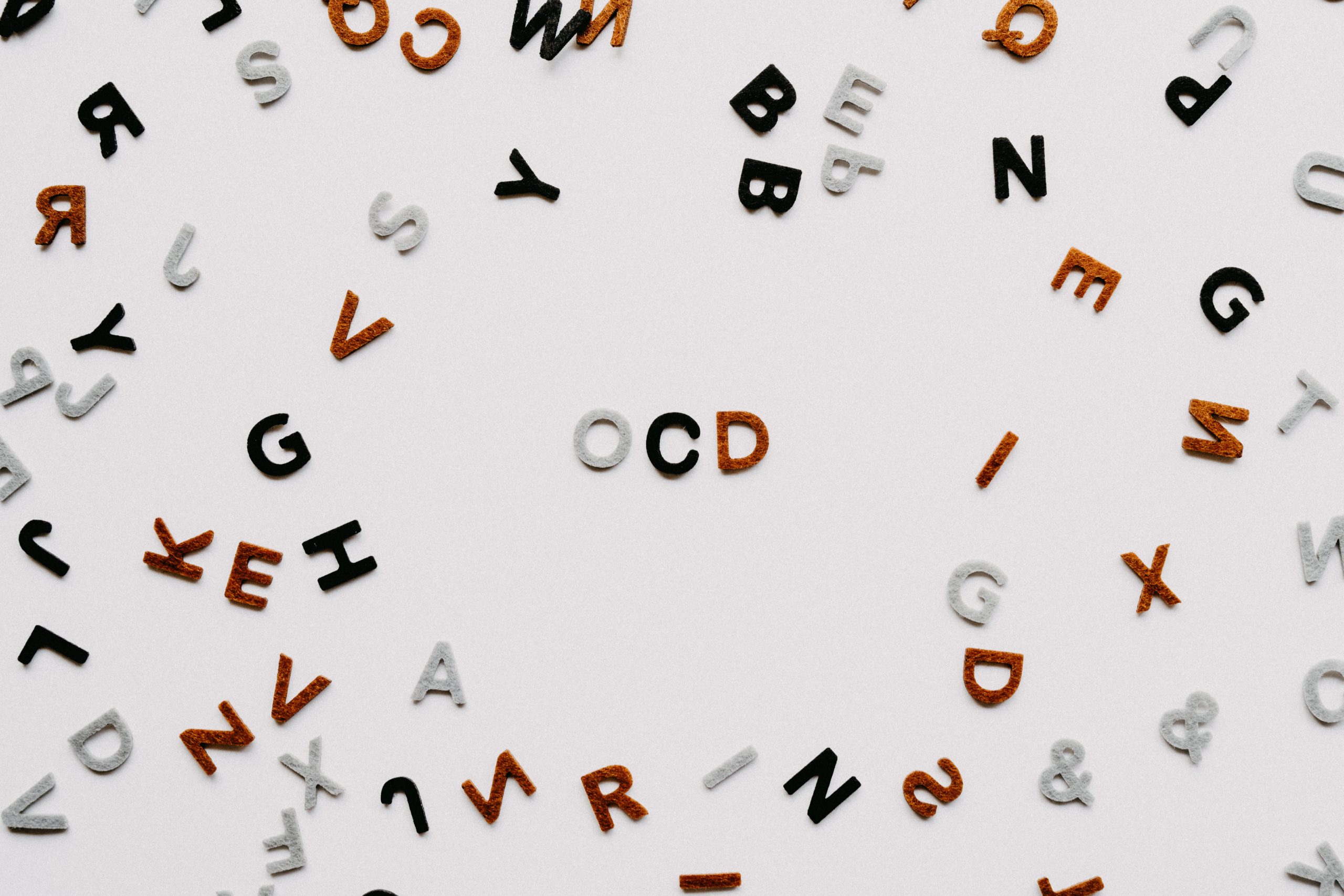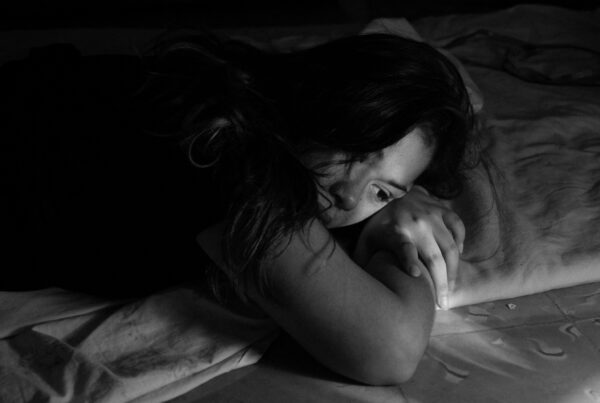
Many people can relate to the feeling of satisfaction in having a perfectly organized room. Some might even understand what it feels like to have an intense urge to recheck the oven before leaving home. Yet only very few people know what it is like to have your life controlled by unwanted and intrusive thoughts and rituals. Most people cannot imagine what it is like to have hours out of your day taken away by behaviors such as checking the oven countless times or worse, being scared to pick up a knife because of what might happen if you do. These are just some examples of what it can feel like to be trapped by your own thoughts when living with OCD.
Many people can relate to the feeling of satisfaction in having a perfectly organized room. Some might even understand what it feels like to have an intense urge to recheck the oven before leaving home. Yet only very few people know what it is like to have your life controlled by unwanted and intrusive thoughts and rituals. Most people cannot imagine what it is like to have hours out of your day taken away by behaviors such as checking the oven countless times or worse, being scared to pick up a knife because of what might happen if you do. These are just some examples of what it can feel like to be trapped by your own thoughts when living with OCD.

Photo by Annie Spratt on Unsplash

Photo by Annie Spratt on Unsplash
Obsessive-compulsive disorder (OCD) – as the name suggests – is a disorder characterized by both obsessions and compulsions. Obsessions take place as recurring, unwanted thoughts, ideas, or sensations, which individuals attempt to suppress or get rid of by performing repetitive behaviors or rituals, also known as compulsions (American Psychiatric Association, 2022).
Intrusive thoughts are not uncommon in healthy individuals. These can be realized in the form of psychological traumas, incomplete tasks or even distressing thoughts of sexual desires, causing harm, or swerving too far with your car. Everyday intrusive thinking also takes place as mind wandering, which is experienced for up to 50% of the time that someone is awake (Visser et al., 2020). The critical difference is that individuals of the clinical population experience greater distress, frequency and attempts to resist unwanted thoughts (American Psychiatric Association, 2022). Additionally, how these thoughts are appraised and dealt with plays a big role. For example, thought-action fusion is often reported in OCD, which is the belief that if a behavior is not performed, something terrible will happen (Visser et al., 2020). When obsessions and compulsions become so severe that they take over a person’s life, it can easily lead to the feeling of being trapped by one’s own thoughts.
Tauscha Johanson, a mother to a daughter diagnosed with OCD, has described her daughter’s experience of OCD to be like living with a monster that manifests itself as intense obsessions and compulsions. Tauscha’s daughter suffered from an intense belief and fear that when driving to work she had hit someone on the way. It came to the point that she had to go back and check the same route and the roadsides for bodies she might have hit. OCD can look different from person to person. It is not just the stereotypical disorder often portrayed in movies showing an obsession with excessive cleaning, tidying up and color-coding shelves. This misrepresentative portrayal can sometimes do more harm than good. It presents us with an idea of a disorder characterized by eccentric behavior exhibited to achieve gratification or simply a phobia of germs (Keeler, 2022). In reality, OCD is a disorder that takes away your freedom to focus on what matters most to you, like reaching academic goals and nurturing relationships. This monster living inside of you, representing uninvited obsessions, wants to be fed through compulsive behavior without end. Johanson shares that the only way to get rid of these thoughts that take over your life, making you feel trapped in a vicious cycle of obsessions and compulsions, is to find a way to no longer fear them. Eventually, the “monster can be starved”, taking away the power it has over one’s life.
“The lifelong persistence of the disorder does not mean it has to continue at the intensity of when it was first diagnosed.”
Another individual, Anne Swanson, opened up about an example of how intrusions took over her life. Daily interactions or phone calls were controlled by the fear of having said something horrible, even though she never had. Over and over, she would obsess about what had just happened and whether she had unintentionally insulted someone. It came to a point where these thoughts kept her from enjoying her beautiful life filled with friends and family. She came to call OCD a “time thief”, robbing her of moments of her life and replacing them with fear, anxiety, and avoidance of using phones all together. One day she realized “we can’t get rid of thoughts by trying to get rid of thoughts”, such as performing a compulsion to suppress an obsession. A much more effectively proven method is exposure and response prevention therapy (ERP), which involves embracing and allowing fears and thoughts to be there, rather than trying to suppress them.
Having the possibility of treatment creates hope for people living in a desperate situation, not knowing if there is a way out. The exposure aspect of treatment refers to confronting your thoughts and the situations that provoke the obsessions. This is then followed by response prevention encouraging you to choose not to perform compulsive behavior (International OCD Foundation, n.d.). While OCD can be a lifelong disorder for some, around 40% of diagnosed children and young adults recover entirely by adulthood (Shmerling, 2018). Importantly, the lifelong persistence of the disorder does not mean it has to continue at the intensity of when it was first diagnosed. Swanson, who underwent ERP, proudly states that her obsessions, which used to occupy her mind for over four hours a day, have now been reduced to only four hours per week. Joe Antonellis shared his story of recovery as well (Antonellis, 2022), in which he explains how he had to use all his mental strength to ward off his constant obsessions and argue against them. Joe started asking himself questions before performing a compulsion, such as “Do I have to do this right now? Who’s making me?”. This mantra – as he calls it “faking it until you make it” – helped him stay grounded during his recovery journey. Antonellis’ OCD consisted of attacks lasting hours or even days when he was younger but now, although still present, only last a few minutes due to the skills he has learnt. For him, cognitively challenging his OCD helped.
OCD can be a painful and isolating experience. Everyone has their own story and personal road to recovery. I believe there is a strong stigma around OCD, that largely stems from ignorance of what OCD really is. This needs to be addressed, in manners beyond partially inaccurate and incomplete television or movie portrayals. A simple first step, that anyone could be taking, is talking about it more in private or school settings and being careful with throwing around the term “OCD” in daily life. The experience of any mental disorder can be extremely isolating, especially if it is largely misunderstood by the majority of the people around you. It is important to understand that although OCD can be severe, it is not a disease that has to persist without the hope of it ever getting better. There is a light at the end of the tunnel, if dealt with in the right way. There is a hope of liberation for individuals that feel trapped by their thoughts. It may be a long and difficult path, people living with OCD can learn to cope with and break the vicious cycle of obsessions and compulsions.
References
-
Antonellis, J. (2022b). Let’s Break Barriers Together: A Story of OCD Recovery. NOCD. https://www.treatmyocd.com/blog/a-personal-story-of-recovery-from-harm-ocd
-
International OCD Foundation. (2022, November 23). International OCD Foundation | Exposure and Response Prevention (ERP). https://iocdf.org/about-ocd/ocd-treatment/erp/
-
Keeler, J. (2022, October 17). How OCD Is Portrayed In Movies & TV Shows – Impulse. Impulse. https://impulsetherapy.com/how-ocd-is-portrayed-in-movies-tv-shows/
-
Shmerling, R. H., MD. (2018). Ask Dr. Rob about OCD. Harvard Health. https://www.health.harvard.edu/mind-and-mood/ask-dr-rob-about-ocd
-
TEDx Talks. (2018, April 13). #OCD: Starving The Monster | Tauscha Johanson | TEDxIdahoFalls [Video]. YouTube. https://www.youtube.com/watch?v=AZZIxyY23IA
-
TEDx Talks. (2016, October 11). My Hidden OCD Exposed | Anne Swanson | TEDxVermilionStreet [Video]. YouTube. https://www.youtube.com/watch?v=A3f4Gf5Q_2w
-
What Is Obsessive-Compulsive Disorder? (n.d.-b). https://www.psychiatry.org/patients-families/obsessive-compulsive-disorder/what-is-obsessive-compulsive-disorder
Obsessive-compulsive disorder (OCD) – as the name suggests – is a disorder characterized by both obsessions and compulsions. Obsessions take place as recurring, unwanted thoughts, ideas, or sensations, which individuals attempt to suppress or get rid of by performing repetitive behaviors or rituals, also known as compulsions (American Psychiatric Association, 2022).
Intrusive thoughts are not uncommon in healthy individuals. These can be realized in the form of psychological traumas, incomplete tasks or even distressing thoughts of sexual desires, causing harm, or swerving too far with your car. Everyday intrusive thinking also takes place as mind wandering, which is experienced for up to 50% of the time that someone is awake (Visser et al., 2020). The critical difference is that individuals of the clinical population experience greater distress, frequency and attempts to resist unwanted thoughts (American Psychiatric Association, 2022). Additionally, how these thoughts are appraised and dealt with plays a big role. For example, thought-action fusion is often reported in OCD, which is the belief that if a behavior is not performed, something terrible will happen (Visser et al., 2020). When obsessions and compulsions become so severe that they take over a person’s life, it can easily lead to the feeling of being trapped by one’s own thoughts.
Tauscha Johanson, a mother to a daughter diagnosed with OCD, has described her daughter’s experience of OCD to be like living with a monster that manifests itself as intense obsessions and compulsions. Tauscha’s daughter suffered from an intense belief and fear that when driving to work she had hit someone on the way. It came to the point that she had to go back and check the same route and the roadsides for bodies she might have hit. OCD can look different from person to person. It is not just the stereotypical disorder often portrayed in movies showing an obsession with excessive cleaning, tidying up and color-coding shelves. This misrepresentative portrayal can sometimes do more harm than good. It presents us with an idea of a disorder characterized by eccentric behavior exhibited to achieve gratification or simply a phobia of germs (Keeler, 2022). In reality, OCD is a disorder that takes away your freedom to focus on what matters most to you, like reaching academic goals and nurturing relationships. This monster living inside of you, representing uninvited obsessions, wants to be fed through compulsive behavior without end. Johanson shares that the only way to get rid of these thoughts that take over your life, making you feel trapped in a vicious cycle of obsessions and compulsions, is to find a way to no longer fear them. Eventually, the “monster can be starved”, taking away the power it has over one’s life.
“The lifelong persistence of the disorder does not mean it has to continue at the intensity of when it was first diagnosed”
Another individual, Anne Swanson, opened up about an example of how intrusions took over her life. Daily interactions or phone calls were controlled by the fear of having said something horrible, even though she never had. Over and over, she would obsess about what had just happened and whether she had unintentionally insulted someone. It came to a point where these thoughts kept her from enjoying her beautiful life filled with friends and family. She came to call OCD a “time thief”, robbing her of moments of her life and replacing them with fear, anxiety, and avoidance of using phones all together. One day she realized “we can’t get rid of thoughts by trying to get rid of thoughts”, such as performing a compulsion to suppress an obsession. A much more effectively proven method is exposure and response prevention therapy (ERP), which involves embracing and allowing fears and thoughts to be there, rather than trying to suppress them.
Having the possibility of treatment creates hope for people living in a desperate situation, not knowing if there is a way out. The exposure aspect of treatment refers to confronting your thoughts and the situations that provoke the obsessions. This is then followed by response prevention encouraging you to choose not to perform compulsive behavior (International OCD Foundation, n.d.). While OCD can be a lifelong disorder for some, around 40% of diagnosed children and young adults recover entirely by adulthood (Shmerling, 2018). Importantly, the lifelong persistence of the disorder does not mean it has to continue at the intensity of when it was first diagnosed. Swanson, who underwent ERP, proudly states that her obsessions, which used to occupy her mind for over four hours a day, have now been reduced to only four hours per week. Joe Antonellis shared his story of recovery as well (Antonellis, 2022), in which he explains how he had to use all his mental strength to ward off his constant obsessions and argue against them. Joe started asking himself questions before performing a compulsion, such as “Do I have to do this right now? Who’s making me?”. This mantra – as he calls it “faking it until you make it” – helped him stay grounded during his recovery journey. Antonellis’ OCD consisted of attacks lasting hours or even days when he was younger but now, although still present, only last a few minutes due to the skills he has learnt. For him, cognitively challenging his OCD helped.
OCD can be a painful and isolating experience. Everyone has their own story and personal road to recovery. I believe there is a strong stigma around OCD, that largely stems from ignorance of what OCD really is. This needs to be addressed, in manners beyond partially inaccurate and incomplete television or movie portrayals. A simple first step, that anyone could be taking, is talking about it more in private or school settings and being careful with throwing around the term “OCD” in daily life. The experience of any mental disorder can be extremely isolating, especially if it is largely misunderstood by the majority of the people around you. It is important to understand that although OCD can be severe, it is not a disease that has to persist without the hope of it ever getting better. There is a light at the end of the tunnel, if dealt with in the right way. There is a hope of liberation for individuals that feel trapped by their thoughts. It may be a long and difficult path, people living with OCD can learn to cope with and break the vicious cycle of obsessions and compulsions.
References
-
Antonellis, J. (2022b). Let’s Break Barriers Together: A Story of OCD Recovery. NOCD. https://www.treatmyocd.com/blog/a-personal-story-of-recovery-from-harm-ocd
-
International OCD Foundation. (2022, November 23). International OCD Foundation | Exposure and Response Prevention (ERP). https://iocdf.org/about-ocd/ocd-treatment/erp/
-
Keeler, J. (2022, October 17). How OCD Is Portrayed In Movies & TV Shows – Impulse. Impulse. https://impulsetherapy.com/how-ocd-is-portrayed-in-movies-tv-shows/
-
Shmerling, R. H., MD. (2018). Ask Dr. Rob about OCD. Harvard Health. https://www.health.harvard.edu/mind-and-mood/ask-dr-rob-about-ocd
-
TEDx Talks. (2018, April 13). #OCD: Starving The Monster | Tauscha Johanson | TEDxIdahoFalls [Video]. YouTube. https://www.youtube.com/watch?v=AZZIxyY23IA
-
TEDx Talks. (2016, October 11). My Hidden OCD Exposed | Anne Swanson | TEDxVermilionStreet [Video]. YouTube. https://www.youtube.com/watch?v=A3f4Gf5Q_2w
-
What Is Obsessive-Compulsive Disorder? (n.d.-b). https://www.psychiatry.org/patients-families/obsessive-compulsive-disorder/what-is-obsessive-compulsive-disorder



